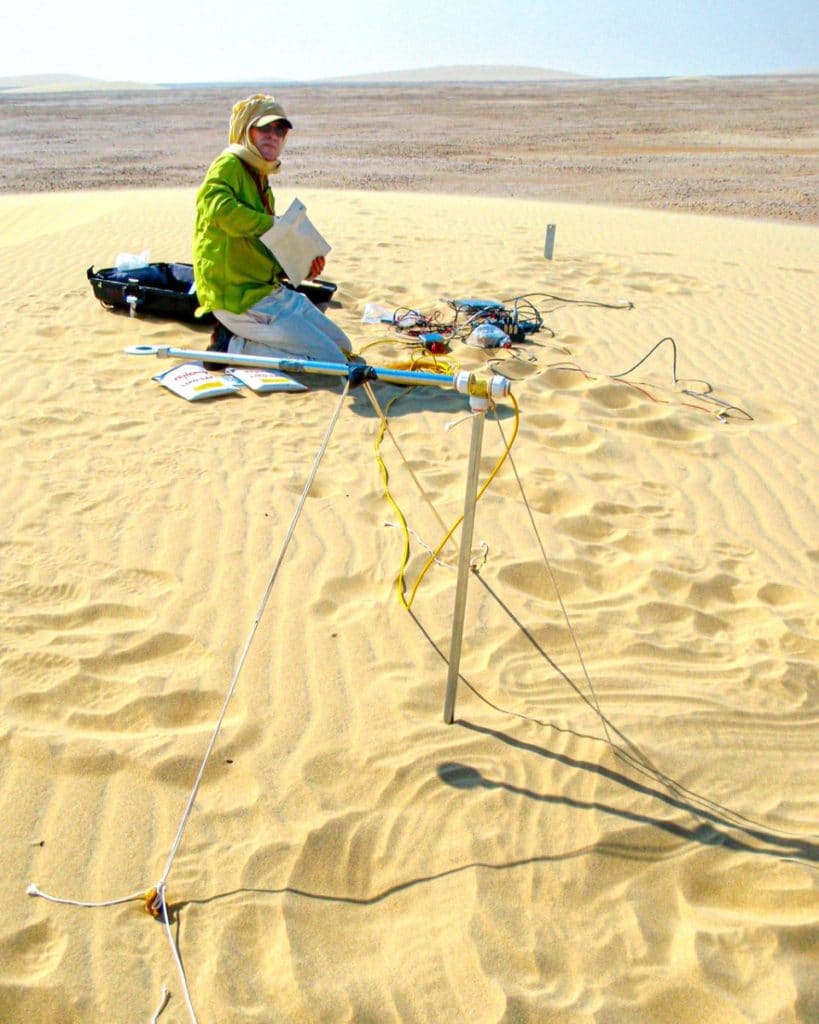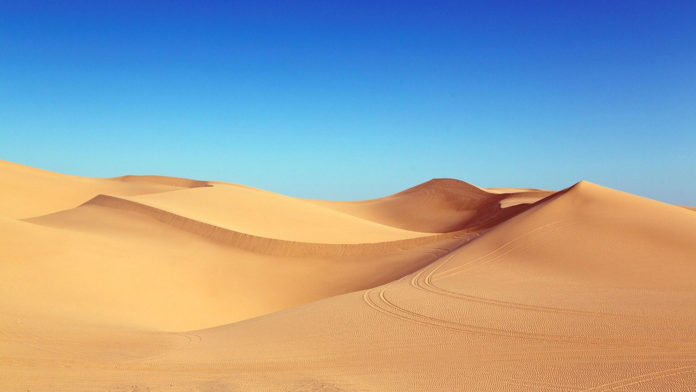Deserts might look lifeless and inert, but they inhale and exhale water vapor through their surface, suggests a new study. The study shows how water vapor penetrates powders and grains for the first time. Their study could have wide-ranging applications far beyond the desert.
Using a newly developed instrument called a capacitance probe, scientists recorded everything from solid concentration to velocity to water content, all with unprecedented spatial resolution. The probe consists of multiple sensors and is sensitive to tiny water films adsorbed on sand grains.
Through this probe, scientists recorded wind speed and direction, ambient temperature and relative humidity, net radiation flux, and subsurface temperature profiles over two days. It revealed how porous sand is, with a tiny air seeping through it.

Lead author Michel Louge, professor of mechanical and aerospace engineering at Cornell University, said, “The wind flows over the dune and as a result creates imbalances in the local pressure, which literally forces air to go into the sand and out of the sand. So, the sand is breathing, as an organism breathes.”
That breathing allows microbes to live deep inside hyper-arid dunes, despite the high temperature.
Scientists also demonstrate that the desert surfaces exchange less moisture with the atmosphere than expected. That water evaporation from individual sand grains behaves like a slow chemical reaction.
Most of the data for this study was gathered in 2011. Scientists still took a decade to make sense of some of the findings, such as identifying disturbances at the surface level that force evanescent or nonlinear waves of humidity to propagate downward through the dunes very quickly.
According to scientists, their probe will have several applications. It can be used to study how soils imbibe or drain water in agriculture, calibrate satellite observations over deserts, and explore extraterrestrial environments that may hold trace amounts of water. The most probable application is the detection of moisture contamination in pharmaceuticals.
Journal Reference:
- M. Y. Louge, A. Valance, J. Xu, A. Ould el-Moctar, P. Chase. Water vapor transport across an arid sand surface – nonlinear thermal coupling, wind-driven pore advection, subsurface waves, and exchange with the atmospheric boundary layer. DOI: 10.1029/2021JF006490
